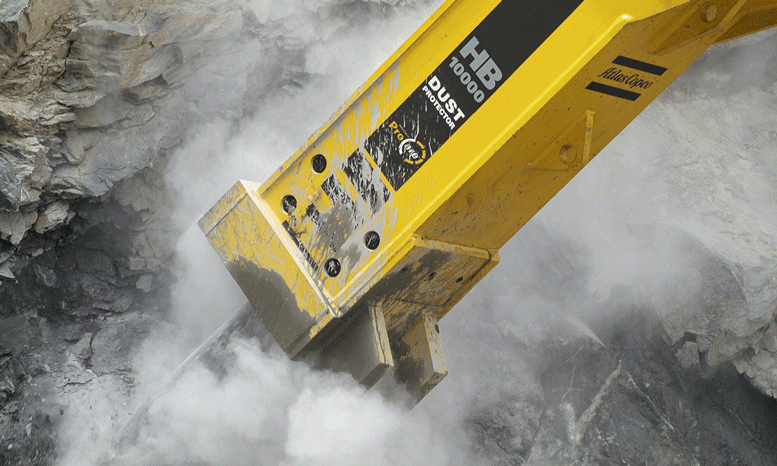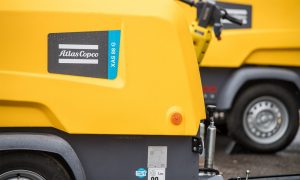Atlas Copco supplies world’s largest mass production hydraulic breaker in Saudi Arabia
Cement maker to put HB 10000 to work for the first time in MENA region at limestone quarry

The first Atlas Copco HB 10000 hydraulic breaker in the Middle East and North Africa market has recently been commissioned by Eastern Province Cement Company (EPCC) in Dammam, Saudi Arabia.
The world’s largest commercially available hydraulic breaker, the HB 10000 weighs 10t and packs a substantial punch with a single impact blow energy of 16,000 Joules, which can be released at a rate of up to 380 blows a minute, said a statement from Atlas Copco.
The impact blow energy is equal to a weight force of 760t, more than the landing pressure of an Airbus A380 airplane, the manufacturer added.
The HB 10000 will be used for primary breaking applications by EPCC in a quarry where hard limestone deposits are arranged in a dam formation. The site not only presents harsh conditions but also extreme temperatures reaching up to 51°C, Atlas Copco said.
“The HB 10000 provides an ideal solution for EPCC’s primary quarrying application. The combination of extreme power and efficiency provided by the breaker gives real operational savings, making it an unrivalled cost-effective production machine for primary rock breaking,” said Fiaz Ghani, regional business line manager, Atlas Copco Construction Tools.
The HB10000 can run on carriers of between 85 to 140t weight classes. It is designed to need less hydraulic input power from the carrier while maintaining maximum impact, the statement said. Around 70% of the impact energy is regenerated by the gas in the breaker’s piston accumulator and only 30% by the hydraulic oil supply of the carrier. With less input demanded from the hydraulic system, less fuel is consumed by the carrier, further lowering operating costs.
Established in 1982, EPCC produces clinker and cement for both the local Saudi and global markets. Shafeek Ahmed, mine superintendent at EPCC, choose the HB 10000 to achieve a lower cost per ton because the company was “facing very hard rock, which lowers traditional dozer productivity [compared with a hydraulic breaker] in this type of deposit”.





